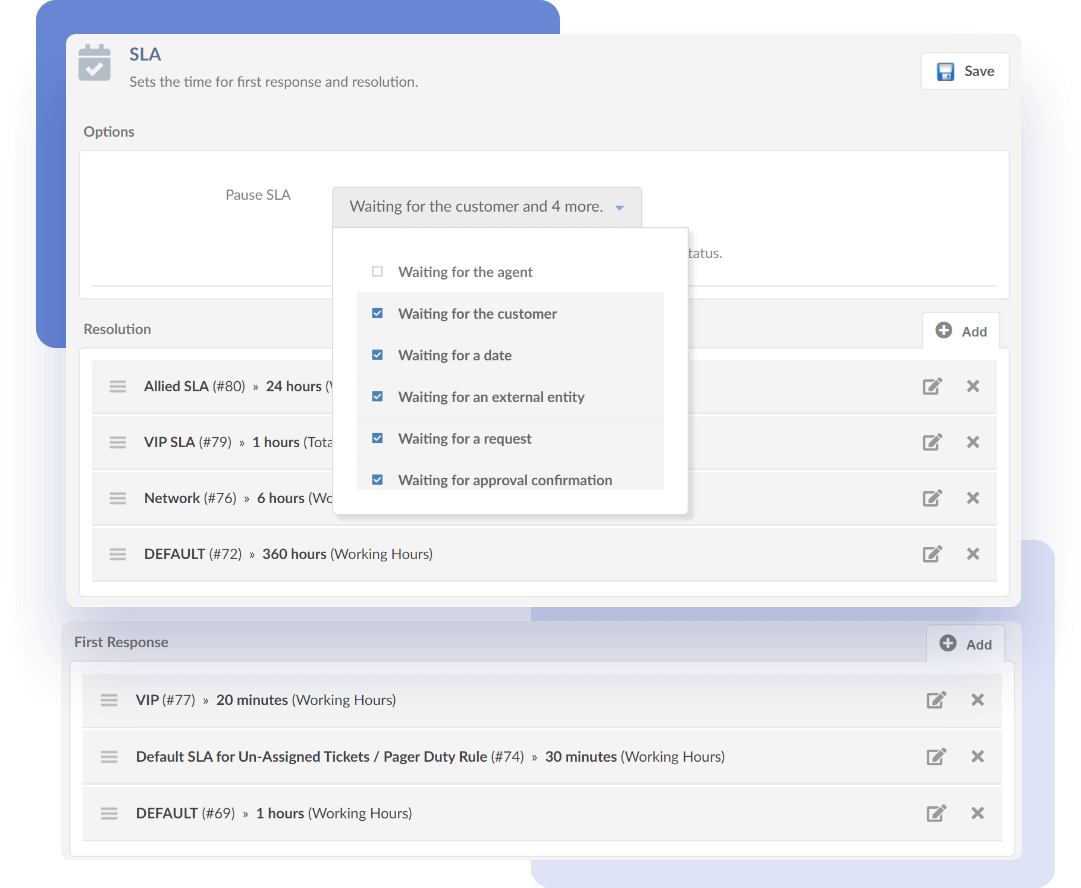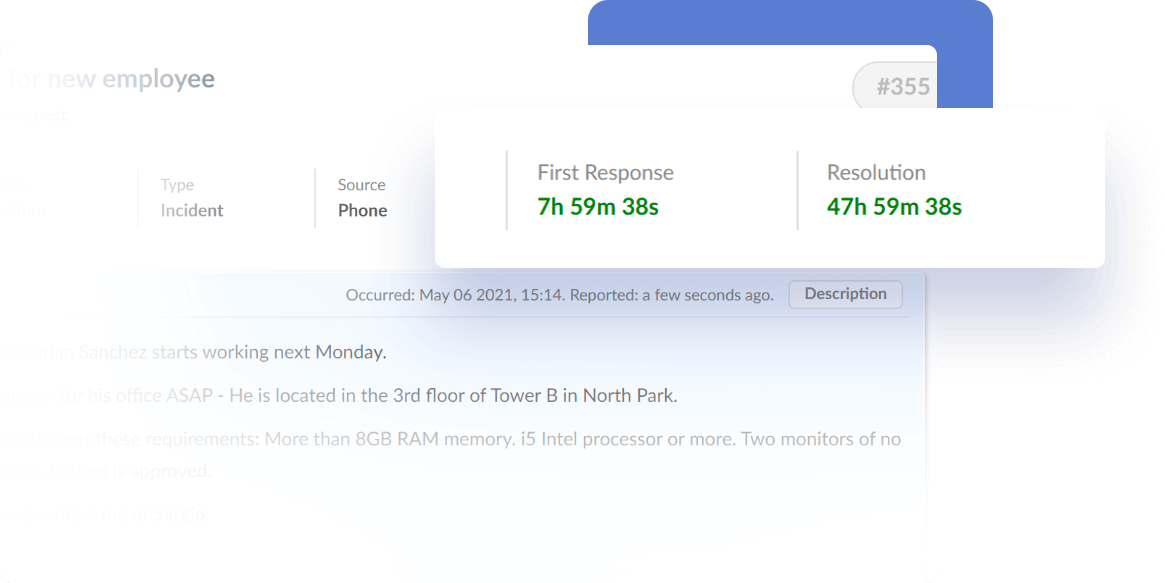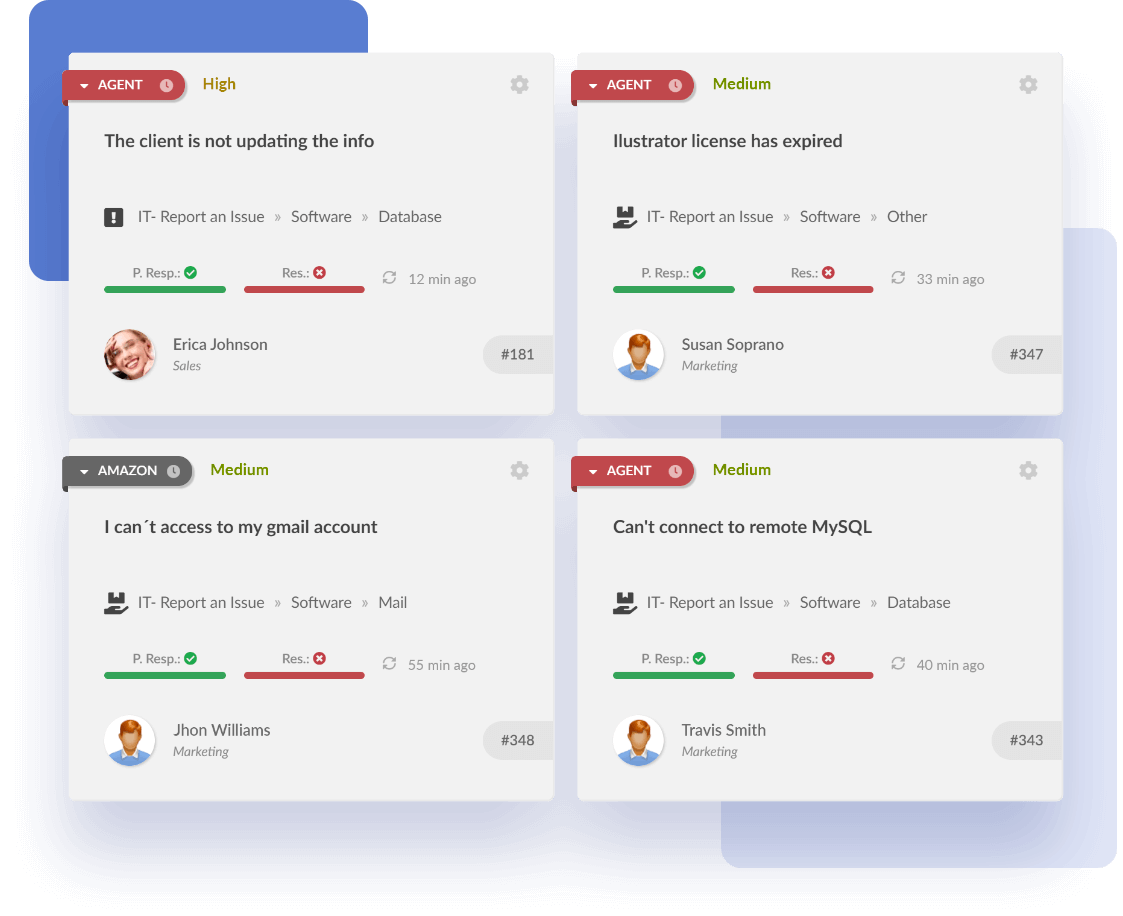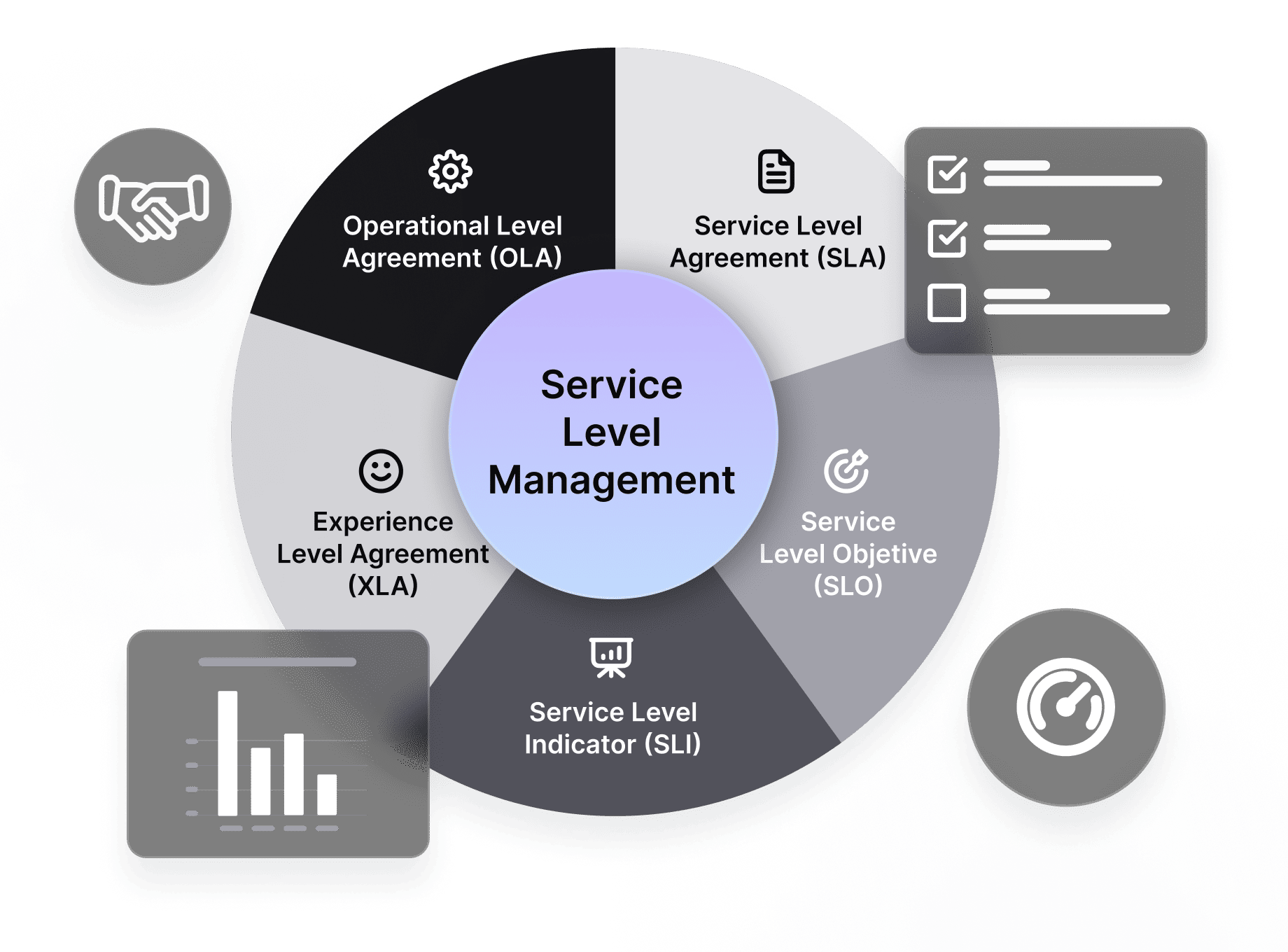Service Level Management and SLAs
Prioritize operations by impact, urgency, and targets, with tracking and alerts to help your IT team meet or exceed performance.
Define SLAs based on rules
Deal with issues and requests based on different resolution targets, thus different levels of urgency and attention. IT teams can define targeted time limits as broadly or as precisely as they need, with different targets for different phases of incident resolution or service request delivery.

Keep agents aware of the agreed response time
Help agents to focus their time and effort where it’s needed most by providing a visual indicator of the agreed SLA response time, ensuring the most critical issues are dealt with first while still achieving SLA targets across all issues and service requests.

Help IT teams to exceed agreed performance levels
Prioritize work by impact, urgency, and agreed service level targets, enabling your IT team to track tickets closely through to resolution, with different service levels applied to incidents and service requests depending on the type, location, team, or role involved.

Discover other Service Management features
Ticket Management
Manage your incidents
AI-Powered
Enhance support efficiency
Self-Service
Encourage self-help
Workflows
Improve IT efficiency
Virtual Service Agent
Conversational ticket resolution
Analytics
Analyze your efforts
Knowledge Base
Build and share knowledge
Change Management
Better manage change
Problem Management
Get proactive
Automation
Automate support processes
ITIL
Employ best practices
SLAs
Prioritize IT operations
Gamification
Improve team productivity
Multiple departments
Extend outside IT
